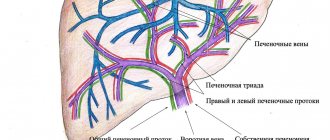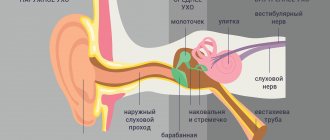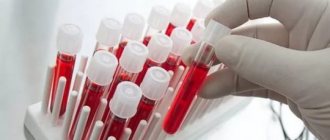Gastralgia, or stomach pain. The nature of the pain is cramping. Localization - the 4th intercostal space in the epigastric part of the peritoneum, just above the umbilical horizontal, directly in the inframammary costal arch. This place is called the solar plexus and is the visual area where the stomach is located. The occurrence of a stomach spasm can be triggered by a certain gastric disease, or it can be the result of neuroses. Typically, stomach pain of varying intensity often becomes the body’s response to hysteria, a stressful situation, deep emotions, and internal aggression. What to do if your stomach hurts? What to do to relieve pain that does not allow you to think radically, almost completely turning off consciousness? Consider the occurrence of stomach cramps.
Causes of stomach cramps
The cause of spasm may be excessive consumption of alcoholic beverages.
Most often, stomach cramps appear as a response to some external irritant. A person does not always attach importance to what he eats or what lifestyle he leads. And therefore, at a certain moment the body itself has to react to this in order to warn the person. The main reasons that can provoke a spasm include:
- Frequent and excessive consumption of alcoholic beverages. Some believe that this effect can only appear after drinking high-strength drinks, but in fact, one glass of wine or champagne will be enough for a weak stomach with gastritis
- Smoking. Tobacco smoke can provoke muscle spasms only because at a certain moment they do not receive the oxygen they need, but an admixture of smoke and nicotine, which negatively affects all cells, causing them to respond
- Food poisoning, especially acute ones, when a person vomits several times. In this case, the stomach will hurt (spasm will appear) for two reasons. Firstly, despite intoxication and general malaise, food must be supplied to it, and since this does not happen, the weakened stomach contracts. Secondly, after repeated vomiting, provoked by specific urges, the muscles will be tense, and therefore, with any movement (especially sudden), a spasm may appear. In addition, it will appear while drinking water or eating food in the first few days after poisoning
- Overeating, during which the stomach simply cannot cope with the food entering it, and therefore may react ambiguously to overload
- A large number of spices in the dish, which provoke excessive acid production
- Taking certain medications that can provoke a stomach response, as a rule, these can be Analgin, Baralgin
- Stress or severe nervous tension, during which the body can react in any way to general tension
- Drinking carbonated drinks. Those people who drink any carbonated drink every day (be it Coca-Cola or just lemonade) expose their stomach to great danger, because the substances in their composition not only corrode it, but also provoke severe cramps
- Fasting, especially for those who follow diets and eat nothing at all once a week
- Infections that have entered the body. Most often, during a spasm when an infection enters the body, a person vomits
Depending on what causes the spasm, the treatment will depend, because if you approach all causes the same, you can only make things worse.
Prognosis and prevention
To prevent the development of abdominal cramps, you must follow simple preventive measures:
- avoid stressful situations;
- observe the work and rest schedule;
- nutrition should be as balanced as possible;
- undergo a comprehensive examination annually;
- take medications only after a doctor’s prescription;
- take regular walks in the fresh air;
- monitor regular bowel movements;
- wear a special bandage during pregnancy;
- drink enough water.
Timely identification of the cause of spasm and competent therapy make the prognosis of the pathology favorable.
Symptoms of stomach cramps
Stomach spasm manifests itself in severe pain, which can be either sharp or dull.
As a rule, stomach spasms are accompanied by a number of symptoms, each of which directly indicates serious problems with the gastrointestinal tract. The main symptoms of stomach spasms include:
- Severe pain that can be either sharp or dull. It all depends on how severe the spasm is. Moreover, in most cases, such pain forces a person to bend over, because in this position the unpleasant sensation passes much faster, and it is easier to endure an attack
- Spasm of other muscles, which may appear if the pain is severe and unbearable. In this case, a person literally can neither straighten nor bend
- A constant feeling of nausea, which may not even go away if the spasm itself has stopped
- Vomiting, which appears if the pain is severe and the spasm is also severe. This is the body’s response by which it tries to get rid of discomfort.
- Dizziness, which appears as a reaction of the body to severe pain. Each person’s pain threshold is different, and some people tolerate it with ease, while others immediately lose consciousness
In any case, when the symptoms described above appear, it is necessary to urgently begin to take some measures to stop the attack so that the situation does not worsen.
Dangerous symptoms
There are a number of symptoms that may appear as concomitants during a stomach spasm, and in which it is necessary to either call your doctor or immediately an ambulance:
- The pain becomes stronger every minute and the person loses consciousness
- The attack lasts several hours, and the pain does not decrease
- Vaginal bleeding began. This is especially dangerous if the woman is pregnant
- If, in addition to pain in the stomach, there is pain in the scrotum (in men)
- If, in addition to frequent vomiting, a person has difficulty breathing
- If there is blood in the vomit
- The stool turned black. This indicates that bleeding has begun in the intestines.
- The pain began to radiate to the neck, chest and shoulders
- Body temperature rose sharply and fever began
- If the patient's skin turns pale
- If you have not urinated for ten hours
In addition, you need to call an ambulance or consult a doctor even when your stomach is swollen and there are problems with the toilet.
Basic principles
Painkillers can be used to relieve pain.
To get rid of this unpleasant symptom as quickly as possible, you need to follow several principles:
- First, relieve the pain, namely, take a painkiller, unless the stomach spasm is accompanied by other symptoms, such as vomiting blood, black stool, etc.
- Secondly, restore fluid levels in the body and cells. To relax the muscle fibers that provoke this spasm, you need to drink as much water as possible, preferably either Essentuki mineral water without gases, or if you can’t go to the store, put a teaspoon of any salt in a liter of boiled water
- Thirdly, take all necessary antiemetic measures. This must be done in order to preserve the drunk fluid in the body as much as possible, since frequent vomiting causes even more severe dehydration.
- Fourthly, follow a dietary regime, namely, on the first day, refuse to eat at all (especially if the spasm was severe). Only sweet tea is allowed
- Fifthly, maintain bed rest, because the body must recover from the attack, especially if it was accompanied by a large loss of fluid (vomiting was present)
If you follow the above principles, you can easily get rid of the spasm and also quickly recover from it.
Stomach spasm, what to do?
NO-SPA is a drug for relieving muscle spasms.
If a person is absolutely sure that the spasm is not caused by some serious disease, it can be relieved independently by doing the following:
- Drink a glass of warm, preferably boiled water. Warm water will help relax tense muscles
- Take a warm bath, but only if there is no weakness or dizziness. Otherwise, this action can only harm
- Apply a bottle of warm water to the stomach, but also only if you are completely sure that the spasm is harmless
- Take a No-shpa (or Drotaverine) tablet, which will help relieve muscle spasms and reduce pain within half an hour
- Take an antacid if heartburn is added to the spasm
- Eliminate spicy foods from your diet, which can easily provoke spasms.
It should be noted that in no case should you take aspirin and anti-inflammatory drugs to reduce pain, as they can provoke an even more severe attack.
Classification
Abdominal cramps can be:
- Physiological . They arise against the background of normal, natural processes occurring in the human body. Physiological spasms are not associated with pathological processes or diseases and do not require special treatment.
- Pathological . They arise against the background of problems associated with functional disorders of human organs and systems.
Abdominal muscle spasms are divided into:
- Clonic . There is an alternation of periods of muscle contraction and relaxation. Clonic spasm occurs in renal failure , uremia and intoxications of various etiologies.
- Tonic . Characterized by prolonged spasms and tension in the muscle corset. Tonic spasm is observed in osteochondrosis , a disorder in the autonomic nervous system, after prolonged static stress, as well as after traumatic injury.
Spasm treatment
Pancreatin - helps speed up the process of food digestion.
Despite the fact that today no clear causes of spasms have been identified, doctors are trying to take all possible preventive and therapeutic measures in order to make the patient’s life easier and make it better. Before starting treatment, doctors need to conduct a full diagnosis of why spam occurred and what provoked it.
And only after this can the specialist recommend that the patient use certain medications or herbs that can not only relieve the spasm, but also cure the true cause. The treatment is something like this:
- When stressed and during times of severe nervous tension, it is recommended to take a No-shpa tablet, as well as any sedative that will help bring the nervous system back to normal and calm the nerve endings a little, which is also very important. Usually, in this case, it will be enough to give the person valerian
- In case of poisoning, it is necessary to completely unload the stomach and begin to eat gradually. In addition, after the vomiting has stopped and about two hours have passed, the person should be given sweet tea to drink in order to replenish not only the water balance, but also to raise the blood sugar level. When dehydrated, the body experiences severe stress and needs help to cope with it.
- For gastritis and ulcers. Due to the fact that during gastritis and ulcers, the gastric mucosa, and indeed the entire stomach, is most vulnerable. And therefore, any negative impact on it can provoke a spasm. To prevent this from happening, a person with problems with the gastrointestinal tract must completely exclude from the diet those foods that could provoke a new attack in the future, and also begin to treat the original problem, that is, gastritis or ulcers. To do this, you need to kill a bacterium such as Helicobacter, which is the cause of the development of these diseases
- When you are hungry, you need to eat immediately. But you need to do this carefully and start with small portions, because the stomach can react ambiguously to food
- When overeating, it is necessary to urgently empty the stomach, artificially inducing vomiting, so as not to overload it more. And then take a Pancreatin tablet so that leftover food is digested faster, and a No-shpa tablet to relieve spasms
In any case, treatment will depend solely on what caused the spasm. Because relieving a symptom at once does not eliminate the problem itself, with the exception of overeating. If a stomach spasm occurs, you need to pay attention to what caused it. And if the pain appeared only once, then there is no need to take special measures. But if spasms begin to appear constantly, then it is better to visit a specialist who will conduct a series of studies and establish the exact cause, and only then prescribe the correct and effective treatment.
Pathogenesis
Gastrospasm develops due to a disturbance in the motor activity of the stomach walls and is accompanied by severe pain. The activity disorder develops against the background of a decrease in the point of excitability, which is located in the nervous visceral system. At the same time, the tone of the vagus nerve increases.
Functional spasms and pain in the epigastric region occur most often in young people aged 20-35 years, which is explained by frequent stress and imbalanced nutrition. People in the older age group are diagnosed with chronic diseases of the digestive tract, which periodically provoke abdominal cramps during exacerbations.
Gastrospasm can occur in three forms:
- Total reduction. It occurs as a secondary symptom in cases of already identified pathology of the digestive tract or nervous system.
- Partial reduction. Most of the stomach takes part in the reflex spasm. An example is the two-cavity gastric form.
- Limited reduction. It is registered due to an unhealthy lifestyle, against the background of occupational intoxication and in chronic smokers. It is also observed in tuberculosis and gastrointestinal ulcers .









